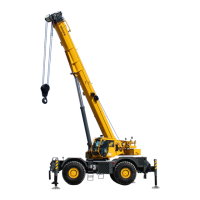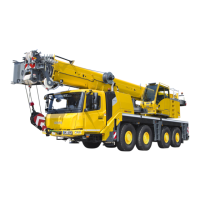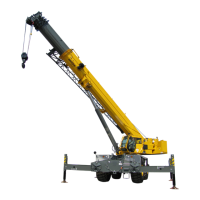GROVE Published 10-21-2010, Control# 198-04 3-3
5540F/YB5515 SERVICE MANUAL ELECTRIC SYSTEM
CHARGING SYSTEM
The purpose of the charging system is to give power for
operation of the lights, instruments, electrical accessories
and controls, and to keep a full charge on the batteries. The
charging circuit includes the alternator, voltage regulator,
warning light, battery, and wiring.
Alternator and Voltage Regulator
The alternator changes the mechanical energy from the
engine into electrical energy. The alternator has a “Rotor
Assembly,” which rotates inside a series of windings called
the “Stator.” The field windings on the rotor receive controlled
current from the voltage regulator, which causes a magnetic
field around the winding. When the rotor turns, an alternating
current (AC) voltage occurs in the windings of the stator. This
alternating current is changed to direct current by diodes in
the alternator. The alternator has an internal voltage
regulator, which controls the output voltage of the alternator
by controlling the amount of current through the field
windings of the alternator. When the voltage on the line is
14.6 volts, current through the field winding is zero. Below 12
volts, the current is maximum. The voltage regulator keeps
the voltage on the line to approximately 14 volts.
Batteries
The batteries are a maintenance-free, lead-acid type battery.
The battery has four functions:
1. To provide adequate power for starting the engine.
2. To be a stabilizer for voltage in the system.
3. To give power to the system when the electrical loads
are greater than the output of the alternator.
4. Store power.
Voltmeter
The voltmeter is in the cab instrument panel and is
connected to the battery. The voltmeter indicates the voltage
(charge) on the battery.
Pressure Switch
The pressure switch, when closed by engine oil pressure,
energizes the hourmeter in the cab instrument panel.
Special Precautions
1. Never cause a short circuit or ground in the output or
field wires of the alternator. These wires are always hot
(charged). A short circuit can cause damage to the
alternator diodes.
2. An alternator is not the same as a generator. Never try to
change the polarity of the alternator. The diodes keep
the correct polarity.
3. Always connect the positive (+) cable from the starter to
the positive (+) terminal of the battery. Connect the
ground cable from the engine to the negative (-) terminal
of the battery. Never change these connections.
4. Never operate the alternator on an open circuit or
disconnect the battery when the alternator is operating.
A high voltage condition will occur and cause damage to
the diodes.
5. When a booster battery is used, make sure the battery is
connected correctly (positive terminal to positive
terminal; negative terminal to negative terminal).
6. Never use a battery charger as a booster for battery
output.
7. Heat can cause damage to the diodes. Keep all sources
of heat away from the alternator.
Battery Maintenance and Charging
Battery
A maintenance-free battery is used on this machine. A
limited amount of maintenance is required on the battery.
See Section 5, Preventative Maintenance.
Charging the Battery
1. Always connect the positive wire (normally red) of the
battery charger to the positive (+) terminal of the battery
first.
2. Connect the negative wire (normally black) of the battery
charger to the engine or frame, far enough away from
the battery to inhibit explosion should a spark occur.
NOTE: Sparks occur when current moves from the positive
to the negative terminals of the charger. If you
disconnect either of the connections, the current in
both wires is stopped.
3. When disconnecting the charger, always remove the
negative (-) or ground connection first. Wait
approximately one minute after the charger has stopped
before disconnecting the chargers positive (+) wire. This
procedure will decrease the possibility of explosion of
hydrogen gas around the battery.
NOTE: When two batteries are used, as in the case when
diesel engine cold start is installed, keep both
batteries fully charged. Charging one of the
WARNING
Batteries produce explosive gases. Keep sparks, flame
and lit smoking materials away. Ventilate when charging
or using batteries in an enclosed place. Always wear eye
protection when working near batteries.
Reference Only
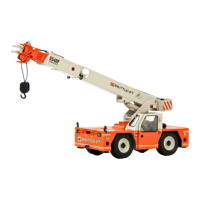
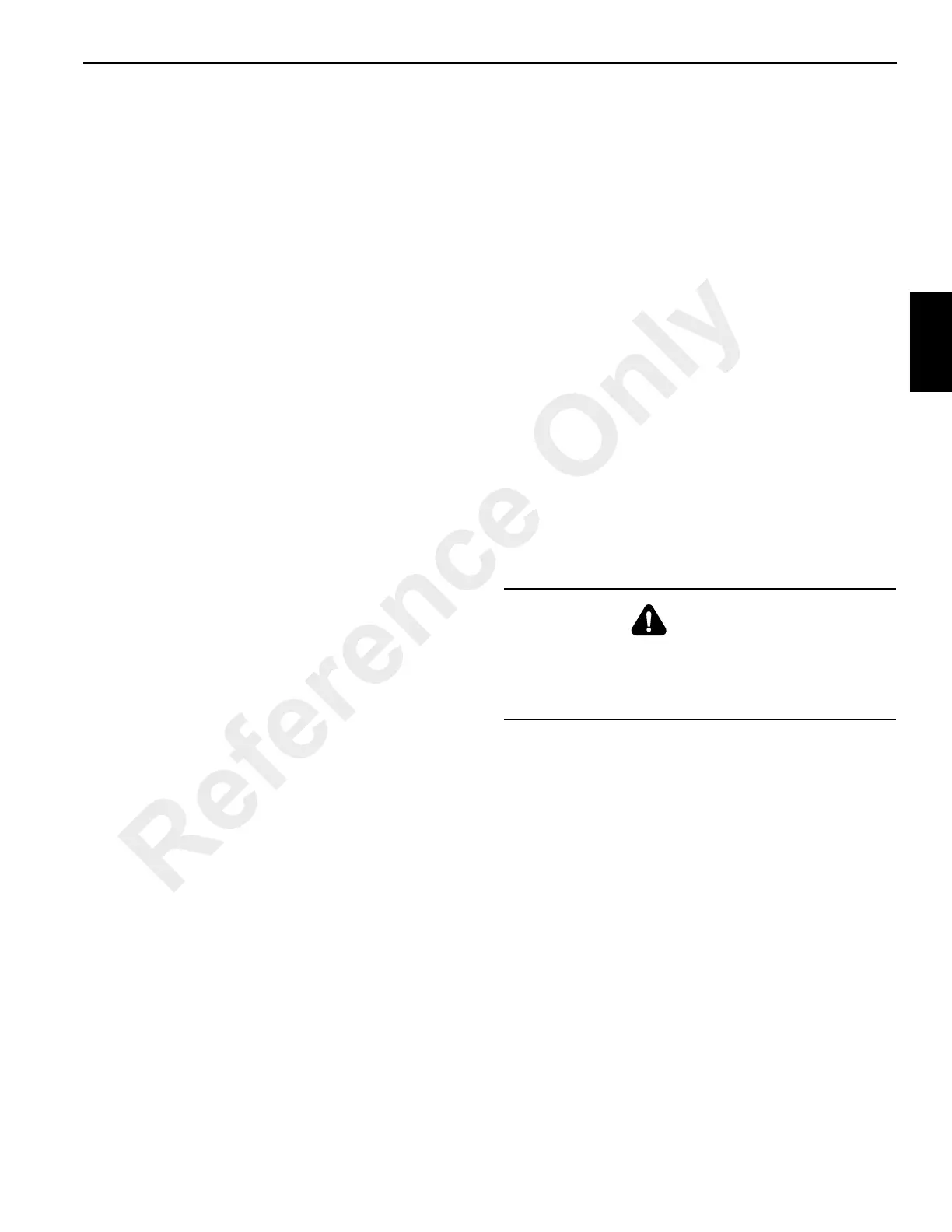